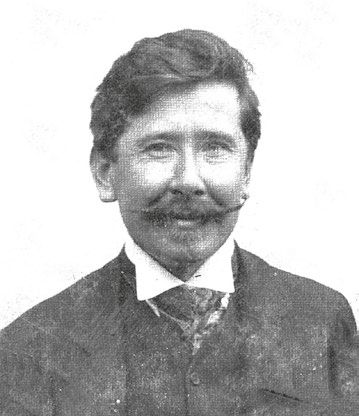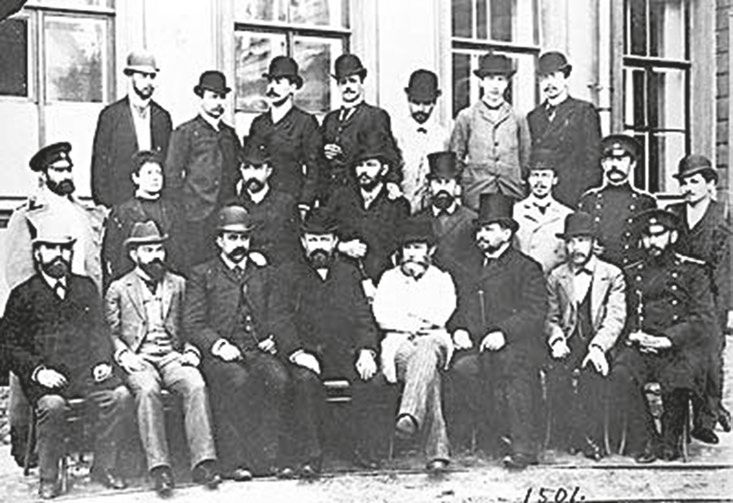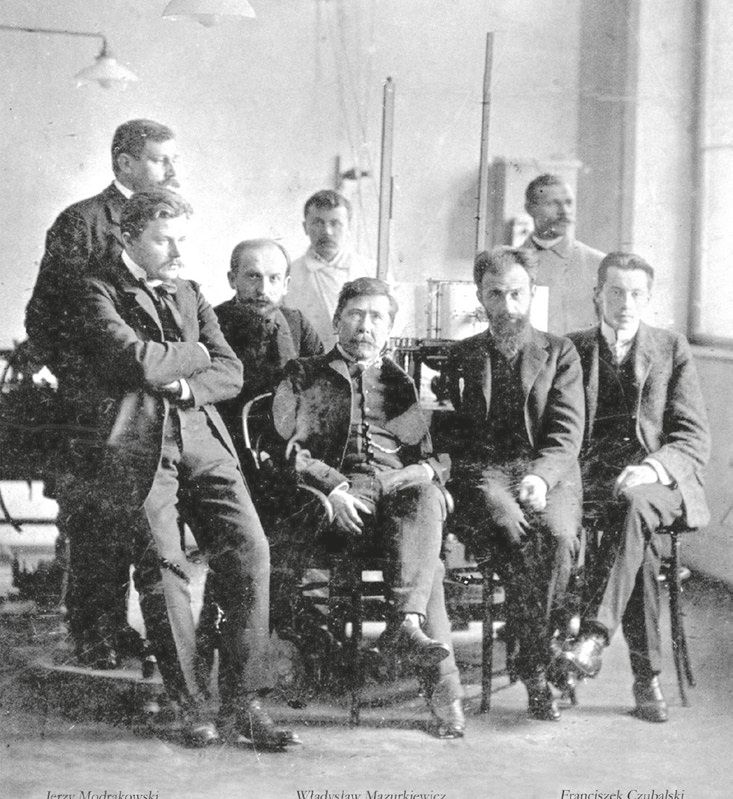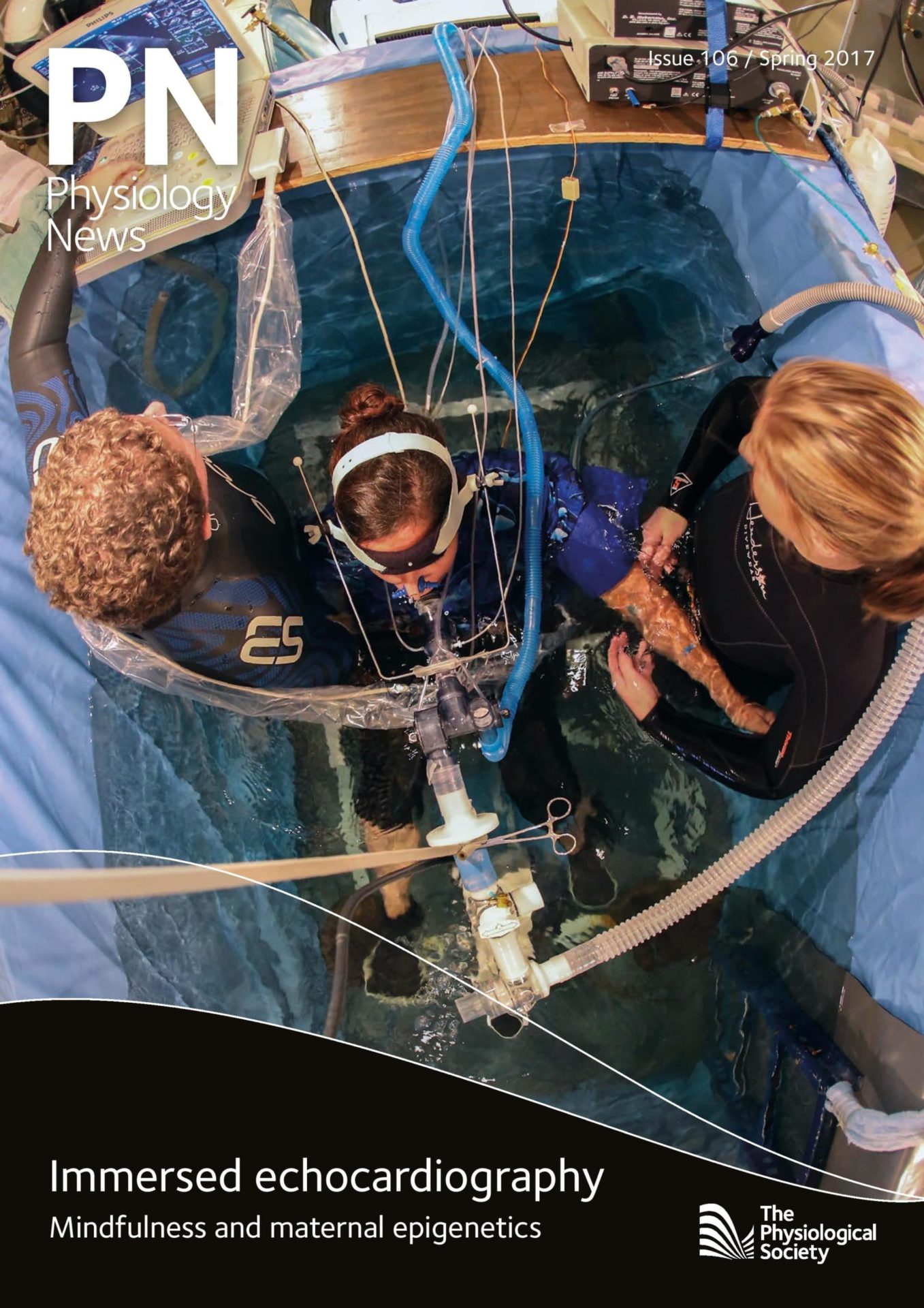
Physiology News Magazine
Leon Popielski and his discovery that histamine stimulates gastric acid secretion
Membership
Leon Popielski and his discovery that histamine stimulates gastric acid secretion
Membership
Oksana Zayachkivska
Department of Physiology, Lviv National Medical Physiology, Lviv, Ukraine
https://doi.org/10.36866/pn.106.38
11 April 2016 marks the 150th anniversary of the birth of Leon Popielski (1/03/1866 – 8/10/1920) (Image 1), Professor of Lviv National Medical University (formerly known as Jan Kazimierz Lviv University), Ukraine. Popielski was the first to recognise that histamine stimulated gastric acid secretion (Modlin & Sachs, 2004). He produced over 100 publications and founded Lviv’s strong pharmacology tradition. He is less well known today than he deserves to be.
Popielski began his scientific career at the Military Medical Academy in St Petersburg, then dominated by Pavlov (Image 2). In 1901, he published work indicating the existence of a peripheral ‘reflex center’ controlling gastric secretion (Popielski, 1901). His findings contradicted the prevailing ‘nervism’ theory of Pavlov, who had supervised Popielski’s PhD thesis. Perhaps not surprisingly this caused friction between them. Pavlov then started a process to verify Popielski’s results which was later described in Boris Babkin’s memoirs. The results were confirmed thereby establishing the idea that processes other than conditional-reflexes, and in particular peripheral mechanisms, also controlled gastric secretion.
Popielski’s work on histamine was carried out in Lviv during the World War I period, although published only later (Image 3). He clearly showed that histamine was a strong stimulant of gastric acid secretion. His PhD student W Koskowski subsequently introduced the histamine test for gastric secretion in patients, which in a somewhat modified form was used clinically for many decades (Polland, 1930). In the 1960’s and early 1970’s, Professor Sir James Black, at what was then Smith, Kline and French, brilliantly extended Popielski’s model of the role of histamine in gastric secretion through the development and use of a new class of antisecretory drug – the H2 receptor antagonists (Black et al., 1972).

These studies proved the essential role of histamine in stimulating acid secretion. An early example, cimetidine, became the first truly blockbuster drug, and revolutionised the treatment of peptic ulcer disease. Popielski’s work provides a clear example of how basic physiological research can, with time, be translated into the clinic for patient benefit.
Based on presentations earlier this year at the 4th Global GI Club meeting ‘Brain-gut axis’, Experimental Biology/FASEB San Diego 2016, and 9th International Symposium of Cell/Tissue Injury and Cytoprotection/Organoprotection in Cracow.
All photos from family collections with permission kindly provided by L. Popielski & W. Greblicki. The author of this article is supported by a Paton Bursary of The Physiological Society.


References
Black JW, et al (1972). Definition and antagonism of histamine H2-receptors. Nature 236,385-390
Modlin IM, Sachs G (2004). Acid related diseases: biology and treatment. Lippincott Williams & Wilkins.
Polland WS (1930). The effect of atropine upon gastric secretion after histamine stimulation. J clin Invest 9,319-332
Popielski L (1901). Ueber das peripherische reflectorische Nervencentrum des Pankreas, Pflügers Archiv 86, 215-246
